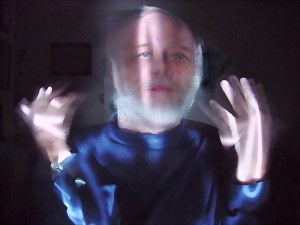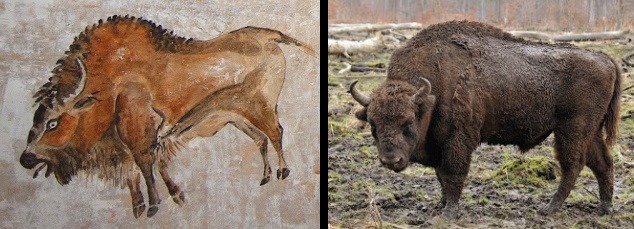My blog
DeconstructingTime
is 10 years old this month
Altogether these blog articles have received
over a quarter of a million views and downloads
on the Internet (see STATS below).
over a quarter of a million views and downloads
on the Internet (see STATS below).
Ten years ago, in December 2012, I began this blog to explore how we, as human beings, understand and relate to time. I never imagined that ten years later I would have outlined a scenario of the evolution of human time-keeping that began millions of years ago and continued up to the present day.
THE BEGINNING
Here is what I wrote on December 24, 2012
Explorations Into The Human Experience Of TimeDecember 24, 2012While time exists independently of human beings, our perception and experience of time are uniquely human. I believe it is the modern human -- i.e. Homo sapiens sapiens -- sense of time that is the key difference between humans and other animals. And further, I believe that time, as we experience it, is created by our uniquely human brains and is critical to our sense of consciousness.
A LITTLE BACKGROUND
I am an independent researcher and thinker. I have a B.A. in English and an M.A. in Communication with a minor in Anthropology, both from the University of North Carolina at Chapel Hill. But I work and think outside the normal academic channels. While I greatly respect the academic world, I find that my restless and curious mind goes in directions that work better independently rather than within an educational setting. I also have had a lifelong interest in human history starting around the age of ten when I began a museum of fossils and Indian arrowheads.
WHAT I FOUND
Over these last ten years, I have explored what I had hoped I could do based on this early introduction. In my ten years of research I have hypothesized:
-- How an early hominin brain contained a unique capability that could begin to work with time in a linear fashion, i,e., time with a past, present, future, and duration -- which no other animal could do. This is my most popular article with over 10,000 page views.
-- How this sense of time evolved through the Lower, Middle, and Upper Paleolithic.
-- How primary tools for both conceptualizing time and working with time were part of all languages.
-- How an expanded sense of linear time would lead to the Neolithic Revolution and then to the first great civilizations of Mesopotamia and Egypt.
-- How the modern sense of time was changed with photography and the scientific revolution.
To my delight, one or more of these blog posts that dealt with each of these very different periods has been popular so people were/are reading the full spectrum of my thoughts. To read about the complete theory click on the following link.
Rick Doble's Theory About
The Human Understanding of Time (HUT)
AN OVERVIEW
A complete theory
From about 3 million years ago to the present day
From 10 years of this blog about the human experience of time
________________________________________
STATISTICS
BLOGGER.COM
-- I have published over 130 posts, many of them 5000 words or more with pictures and footnotes.
-- This has led to over 128,800 views.
THESE BLOGS ON ACADEMIC SITES
I also converted most of my blogs to PDF documents which I put on three academic sites. Academia.edu has provided me with the most detailed statistics so I only list total page views in the other two academic sites.
ACADEMIA.EDU
I have recorded over 28,000 views plus 5000+ downloads.
I have over 840 followers.
1,678 people are heavily involved with my work, i.e., read or downloaded multiple documents.
I have 1 co-author and 40 mentions by other scholars.
A total of 5,612 have viewed my work on Academia.edu.
My work is in the top 1% of documents viewed on this site.
RESEARCHGATE.COM
Total reads 72,523
FIGSHARE.COM
USAGE METRICS
38563 item views
13539 item downloads
Altogether readers from over 180 countries (more than 90% of the countries in the world) have viewed my blogs and articles.
Added together all the academic sites received over 150,000 views and downloads.
When the academic site page views and downloads are added to the blog views, the total is more than a quarter of a million or more than 280,000 views and downloads.
________________________________________
THIS RESEARCH AND THE INTERNET
I realize now that I began this blog at almost the perfect time for this kind of research. I don't think I could have done what I did twenty years earlier, for example. I needed to be able to search millions of documents and have access to millions of photographs that would provide evidence or illustrate my ideas. By 2010 things were in place.
Google, of course, was a key component, because it was one thing to have access to millions of documents and it was quite another thing to find just the right document. I had worked as a research assistant when I was in graduate school, so I was already ahead of the game, in a sense. I knew how to track down different documents that would support my theories.
FINDING PROOF
In addition to my general ideas, I was able to prove or come close to proving a number of my specific theories. As far as I know, I was the first person to assert many of these ideas. For example:
-- I was able to show that the reed industry in Mesopotamia was a major industry because clay cuneiform port receipts showed that reed bundles were a major product that was being delivered.
LARGE MESOPOTAMIAN REED SHIP: While this is an artist's conception, it is not unrealistic. Large ships such as this and a fleet of small boats in Mesopotamia were made with reeds. Large and small homes were constructed with reeds along with sturdy baskets used for dredging the channels and transporting clay for making bricks. Also, reeds in combination with bitumen were used in the construction of levees and the making of irrigation buckets. I found that the crucial importance of reeds to the early civilizations in Mesopotamia has not been adequately understood.
-- As a lifelong photographer I was able to show that the passageway at the Neolithic tomb in Newgrange Ireland provided a wealth of information (by the way light entered the passageway) during the time of the winter solstice. This meant that these Neolithic people could determine the day of the solstice in real time which the Romans and Greeks could not.
TOP: A bird's eye overview of the passageway at Newgrange. Light entered the passageway through the specially designed roof-box and not the entrance to the passageway.
BOTTOM: Left: the entrance to the passageway with the roof-box up above. The passageway was illuminated only around the time of the winter solstice because these Neolithic engineers had made a special roof-box (right) with a slit that controlled how the light was captured. This design also magnified the light and accentuated both the angle of the light and its movement down the passageway. On the day of the solstice, the light entered, went the full distance of the passageway, and then withdrew for a total of 17 minutes.
-- And I was able to show from fossil evidence that early hominins lived close to weaverbirds and their complex woven nests, so these nests could have been a model for early baskets and containers millions of years ago.
LEFT: A weaverbird nest. Notice its intricate weaving with opposing strands and under and over strand construction.
RIGHT: A random basket made with flexible green vines. When the basket was completed and the vines dried, a basket such as this was strong and could carry four or more kilograms.
Without the Internet, it would have been virtually impossible to find these kinds of evidence.
Also, and just as important, millions of photographs were made available to researchers. These photographs often provided direct evidence in themselves. So I was able to show, for example, that the Paleolithic paintings of bison in the Cave of Altamira in Spain were accurate drawings of live bison and which had to have been done from memory and keen observation as the paintings were painted deep in a dark cave.
LEFT: A bison painting from the ceiling at the Cave of Altamira in Spain. Made with a kind of spray paint technique, this painting shows that this Paleolithic artist had a good memory and keen observation to capture a realistic image of a standing bison that was painted deep in a dark cave.
RIGHT: A modern-day bison that is not the same species at the time of the paintings at Altamira, but, nevertheless, shows how accurately the cave painter captured the stance.
And I was able to propose an idea about time concepts that pertained to the development of language, based on an unusual language spoken by hunter-gatherers in the Amazon. The idea is that early concepts of time by humans would be short-term and immediate having just emerged from the immediacy of animal existence. This article has recorded well over 1000 page views and downloads by linguists and was more popular on my academic sites than on the blog itself. At one point it was the most popular academic article on Academia.edu.
How Language Began
And The Human Understanding Of Time
Daniel Everett's New Theories About The Evolution Of Language
CONSCIOUSNESS AND TIME
Photograph of Helen Keller 'feeling' the words from the mouth of Mrs. Calvin Coolidge, wife of the president.
Helen Keller was deafblind and could not communicate with words until the age of seven. When she did learn words, she not only understood the words for the world around her and gained a "misty consciousness" but she also gained a sense of time that had not existed before.
At the still point of the turning world.
Neither flesh nor fleshless;
Neither from nor towards;
At the still point, there the dance is,
But neither arrest nor movement.
And do not call it fixity,
Where past and future are gathered.
Neither movement from nor towards,
Neither ascent nor decline.
Except for the point, the still point,
There would be no dance,
And there is only the dance.
T.S. Eliot, Burnt Norton, 1936, Four Quartets
All pictures/images are from commons.wikimedia.org,
You will find the link for these pictures in the related blog article.







